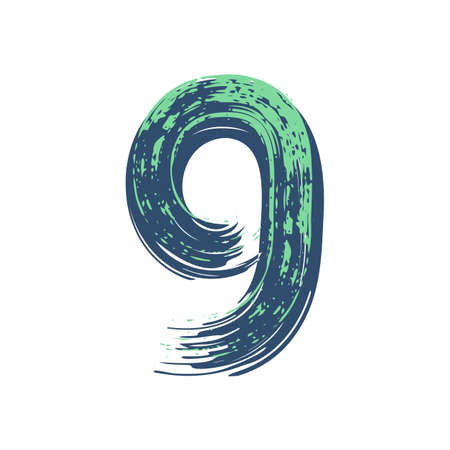Understanding Oracle Cards and Tarot: Key Differences
When exploring the integration of oracle cards with tarot spreads, it is essential to first understand the core differences between these two popular divinatory tools, particularly as they are perceived and utilised by practitioners across the UK. Tarot cards follow a highly structured system, consisting of 78 cards divided into the Major and Minor Arcana. Each card holds a specific meaning, often rooted in centuries-old symbolism that has deep resonance within British occult traditions and spiritual communities. In contrast, oracle cards offer far greater flexibility in structure and theme; decks can range from 12 to over 60 cards, each designed with unique artwork and messages that reflect the creator’s vision. For many UK readers, this lack of prescribed structure allows oracle decks to be tailored to personal or contemporary themes—ranging from Celtic folklore to modern mindfulness—that speak directly to British cultural sensibilities. Furthermore, while tarot is frequently used for exploring complex life questions through established spreads like the Celtic Cross (a particular favourite among UK tarot enthusiasts), oracle cards are often employed for daily guidance or affirmation, providing intuitive insight without the rigour of formal spreads. These distinctions form the foundation for integrating both systems in a way that aligns with British values of tradition and individual expression.
2. The British Tradition of Cartomancy
When exploring the integration of oracle cards with tarot spreads from a UK perspective, it is essential to understand the unique British tradition of cartomancy. The practice of using playing cards, tarot, and later oracle cards for divination has deep roots in British culture, blending folklore, historical influences, and evolving community perspectives.
Historical Context of Cartomancy in the UK
Cartomancy first gained popularity in Britain during the 18th century, following its introduction from continental Europe. While initially regarded with suspicion by religious authorities, the art quickly found a home among various social classes. Victorian spiritualism further elevated the status of tarot and related practices, entwining them with séances and parlor games that flourished throughout the 19th century. In more recent decades, British practitioners have embraced both traditional Rider-Waite-Smith tarot decks and a variety of locally designed oracle decks, reflecting an openness to adaptation within the framework of established ritual.
Local Customs and Regional Influences
| Region | Customs & Practices | Notable Features |
|---|---|---|
| England | Tea leaf reading (tasseography) often combined with card readings; strong connection to Arthurian legends | Integration of folklore and mythological symbolism |
| Scotland | Use of Scottish folklore motifs; divinatory gatherings at local fairs and markets | Celtic cross spread adaptations; use of regional dialect in readings |
| Wales | Incorporation of Welsh mythology and Druidic traditions into card interpretations | Celebration of seasonal festivals such as Samhain alongside readings |
| Northern Ireland | Merging Christian symbolism with older pagan customs in card selection and spreads | Community readings at social events; respect for ancestral lineage in divination practices |
Respected Figures in British Cartomancy
The UK boasts numerous influential figures who have shaped the landscape of cartomancy. Prominent examples include Arthur Edward Waite, co-creator of the Rider-Waite tarot deck; Pamela Colman Smith, artist behind its iconic imagery; and more contemporary voices such as Caitlín Matthews, known for her work on Celtic wisdom oracle cards. These individuals have contributed both scholarly research and practical innovations that continue to inspire British readers today.
Modern Community Perspectives on Oracle-Tarot Integration
The modern UK cartomancy community is characterised by inclusivity and experimentation. Local meet-ups, online forums, and holistic fairs across Britain encourage practitioners to blend oracle cards with traditional tarot spreads—often using oracle cards for broader thematic guidance before delving into specific issues with tarot. Many British readers value the personalisation this integration affords, allowing space for both intuition and structure within their readings. This synergy reflects a distinctly British approach: honouring tradition while embracing creative evolution.

3. Integrating Oracle and Tarot Decks: Best Practices
Blending oracle cards with tarot spreads offers UK readers a richer, more nuanced approach to divination, but it requires both structure and sensitivity to achieve a harmonious reading. Below, we break down best practices for combining these two systems, ensuring that each maintains its integrity while working in tandem for deeper insight.
Establishing Clear Intentions
Begin your session by setting a clear intention for why you are integrating both decks. In the UK, where traditions often blend pragmatism with intuition, it’s helpful to decide if the oracle cards are meant to clarify, expand, or challenge the messages from your tarot spread. This clarity will guide your process and keep readings focused.
Selecting Complementary Decks
Choose an oracle deck that resonates with the themes or energies of your tarot deck. For example, pairing a classic Rider-Waite-Smith tarot with a Celtic-themed oracle can create a culturally grounded experience that speaks to British symbolism and folklore. Consistency in theme supports a seamless narrative flow within the reading.
Structuring Your Spread
Decide on the placement of oracle cards within your spread. A common UK approach is to use tarot for structured positions—such as past, present, future—and then draw an oracle card as an overarching message or final advice. Alternatively, insert an oracle card at key turning points within a larger spread to highlight pivotal insights.
Techniques for Interpretation
When interpreting combined readings, consider how the straightforward wisdom of an oracle card might complement or contrast with the complex symbolism of tarot. In practice, allow space for intuitive connections—perhaps drawing on local idioms or references familiar to a British audience—while also grounding interpretations in logical sequence and context provided by the spread.
Acknowledging Individual Card Voices
Respect the unique voice of each system: let tarot provide depth and structure, while oracle cards offer gentle guidance or thematic emphasis. Avoid forcing connections; instead, observe how each message stands alone before exploring their relationship within the wider reading.
Cultural Sensitivity and Personalisation
Finally, tailor your approach to reflect UK sensibilities—whether that means referencing seasonal cycles like Beltane or Lammas, using plain English for clarity, or incorporating local folklore as interpretive touchstones. By balancing structure with cultural awareness and intuition, you foster readings that feel both insightful and authentically British.
4. Sample Spreads for UK Readers
UK tarot enthusiasts often blend traditional spreads with oracle cards to create richer, more nuanced readings. This integration is particularly popular in the UK due to its strong heritage of both structured tarot practices and intuitive, free-form divination methods. Below, we explore several spread layouts commonly used or adapted by UK readers, demonstrating how oracle cards can be seamlessly included for added insight.
The Celtic Cross Enhanced
The Celtic Cross remains a staple among British tarot practitioners. To incorporate oracle cards:
| Position | Tarot Card | Oracle Card Addition |
|---|---|---|
| 1 (Present) | Main focus | Clarifying message |
| 2 (Challenge) | Obstacle/Influence | Advice or affirmation |
| 3-10 | Traditional positions (past, future, etc.) | Add an oracle card to any position where deeper emotional context or guidance is needed |
This approach allows for British-style reflection: grounded in tradition, but open to modern spiritual tools.
The Three-Card “British Seasons” Spread
This simple spread aligns with the UKs deep connection to seasonal change:
- Card 1 (Spring): What’s emerging?
- Card 2 (Summer): What’s flourishing?
- Card 3 (Autumn/Winter): What needs letting go or rest?
Add an oracle card above each tarot card for “seasonal advice” or “nature’s wisdom,” reflecting the British reverence for the countryside and changing weather.
The “London Pathways” Spread
Inspired by the city’s iconic crossroads and diversity:
| Position | Description (Tarot) | Description (Oracle Integration) |
|---|---|---|
| 1 (North) | Your current direction | A signpost or encouragement from your guides |
| 2 (East) | An upcoming opportunity/challenge | A keyword or theme to focus on |
| 3 (South) | An underlying influence or motivation | An affirmation for grounding energy |
| 4 (West) | A hidden strength/resource | A message about self-care or resilience, echoing UK values of endurance and resolve |
Adapting Spreads to UK Sensibilities
British readers often appreciate subtlety and personal resonance. When integrating oracle cards, choose decks that reflect local folklore, landscapes, or culturally relevant themes—such as British wildlife or literary references—to create a more meaningful dialogue between tarot and oracle systems.
Summary Table: Common UK Spread Integrations
| Spread Name/Theme | Main Tarot Use | Oracle Card Role |
|---|---|---|
| Celtic Cross Enhanced | Dive into life situations using structure | Add layers of guidance/affirmation |
| British Seasons Spread | Narrate personal cycles | Add nature’s perspective/seasonal advice |
| London Pathways Spread | Navigating choices and influences | Add directional clarity/messages from guides |
This systematised approach enables UK readers to maintain the integrity of classic tarot while embracing the adaptability and insight that oracle cards provide.
5. Ethics and Etiquette in British Card Reading
When integrating Oracle cards with Tarot spreads in the UK, practitioners must adhere to a set of ethical standards and social conventions that reflect both the gravity and sensitivity of card reading within British culture. These expectations are shaped by both professional best practices and unique regional nuances.
Widely Recognised Ethical Standards
British readers commonly uphold principles of confidentiality, respect for client autonomy, and non-judgemental guidance. It is vital to obtain informed consent before any session, clearly outlining what Tarot and Oracle readings can—and cannot—offer. Many practitioners avoid making definitive predictions about health, legal, or financial matters, instead offering insight and reflection. Transparency about qualifications, reading style, and limitations is considered essential in maintaining trust.
Regional Etiquette and Social Norms
The UK’s diverse regions may exhibit subtle differences in etiquette. In England, a polite and measured tone is expected; clients value clarity but also discretion in the language used. In Scotland and Wales, a more conversational or community-oriented approach may be appreciated, while still upholding boundaries around personal questions. Across the UK, it is customary to invite questions at the end of a reading and to thank participants for their openness.
Professional Conduct During Combined Readings
Combining Oracle cards with Tarot spreads requires careful explanation so clients understand how each deck contributes to the session. Practitioners should avoid imposing interpretations; instead, they facilitate self-discovery while respecting client beliefs and backgrounds. The use of culturally sensitive decks or inclusive symbolism can further enhance rapport.
Client Expectations in the UK Context
Clients typically expect privacy, empathy, and a balanced perspective rather than sensationalism or fatalism. The reader’s role is seen as supportive rather than directive. Follow-up support—such as summarising key themes or suggesting reflective exercises—is often welcomed. Ultimately, upholding these standards not only honours tradition but also fosters responsible integration of Oracle cards with Tarot spreads in the British context.
6. Resources and Communities in the UK
For those looking to deepen their practice of integrating oracle cards with tarot spreads, the UK offers a wealth of reputable resources and vibrant communities. Whether you are a beginner or a seasoned reader, connecting with others and accessing quality information can enhance your journey.
Established British Organisations
The Tarot Association of the British Isles (TABI) is a well-respected body that provides education, ethical guidelines, and networking opportunities for tarot and oracle card enthusiasts. Members gain access to exclusive articles, online courses, and annual conferences tailored to the unique nuances of the UK card reading scene. Another notable organisation is The College of Psychic Studies in London, which regularly offers workshops and events focused on both tarot and oracle practices.
Online Forums and Digital Communities
Online spaces such as Aeclectic Tarot Forum UK Section and dedicated Facebook groups like UK Tarot & Oracle Readers serve as active hubs for discussion, resource sharing, and peer support. These platforms allow users to share spread ideas, review decks available in British shops, and arrange local meet-ups. The collaborative spirit found in these forums fosters an ongoing exchange of knowledge specific to UK traditions and experiences.
Local Groups and In-Person Events
Across cities such as London, Manchester, Edinburgh, and Bristol, numerous local meet-up groups offer regular gatherings for tarot and oracle card readers. Libraries, independent bookshops, and holistic centres often host monthly circles or workshops where participants can practise new spreads, discuss integration techniques, and connect over tea—a cherished aspect of British culture.
Recommended Reading and Retailers
For further self-study, British authors such as Caitlín Matthews provide excellent books on both tarot and oracle systems. Local retailers like The Astrology Shop (London), Treadwell’s Bookshop, and reputable online outlets including Watkins Books stock a broad range of UK-specific decks and guidebooks. These resources ensure that learners have access to culturally relevant materials supporting their ongoing development.
By engaging with these respected organisations, online communities, local groups, and curated resources within the UK, card reading enthusiasts can enjoy continuous learning while building meaningful connections grounded in shared interests and cultural context.


